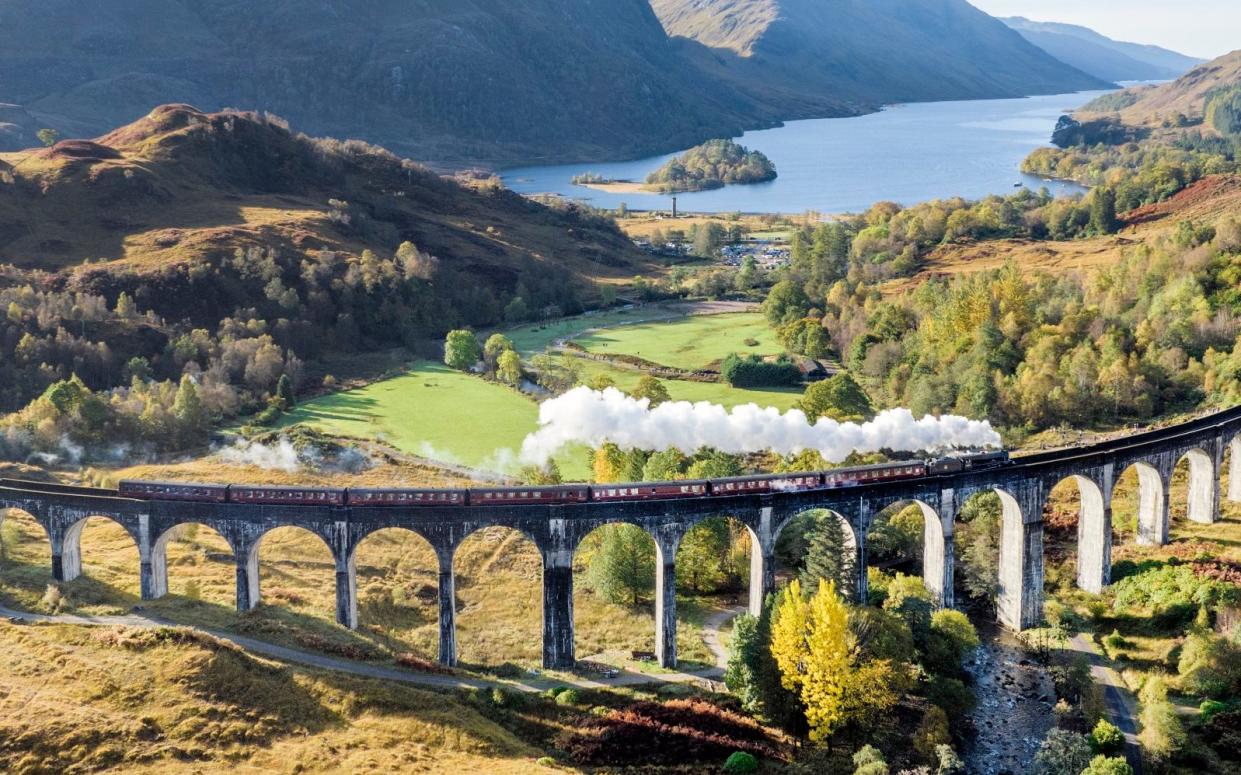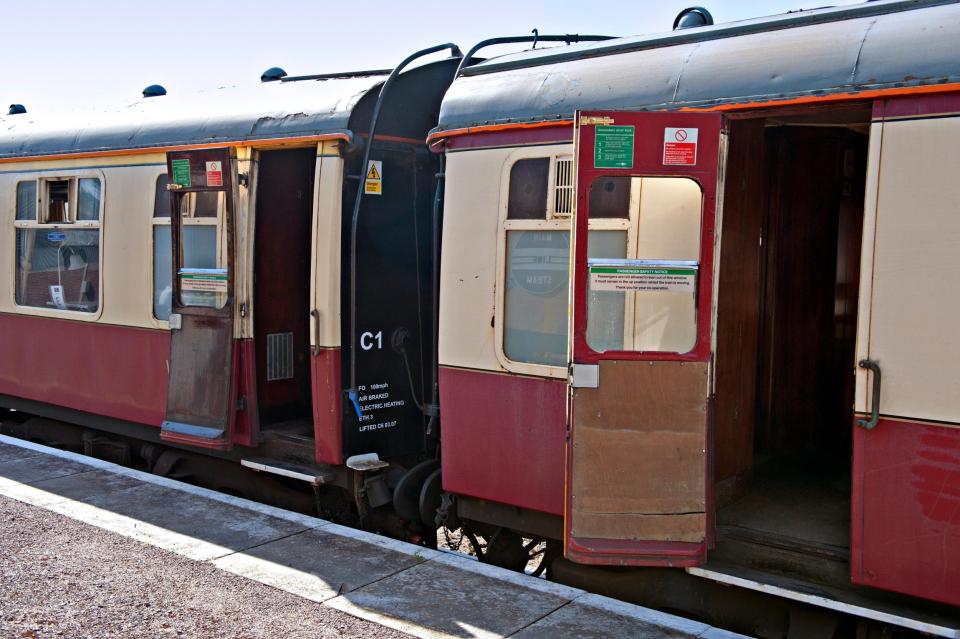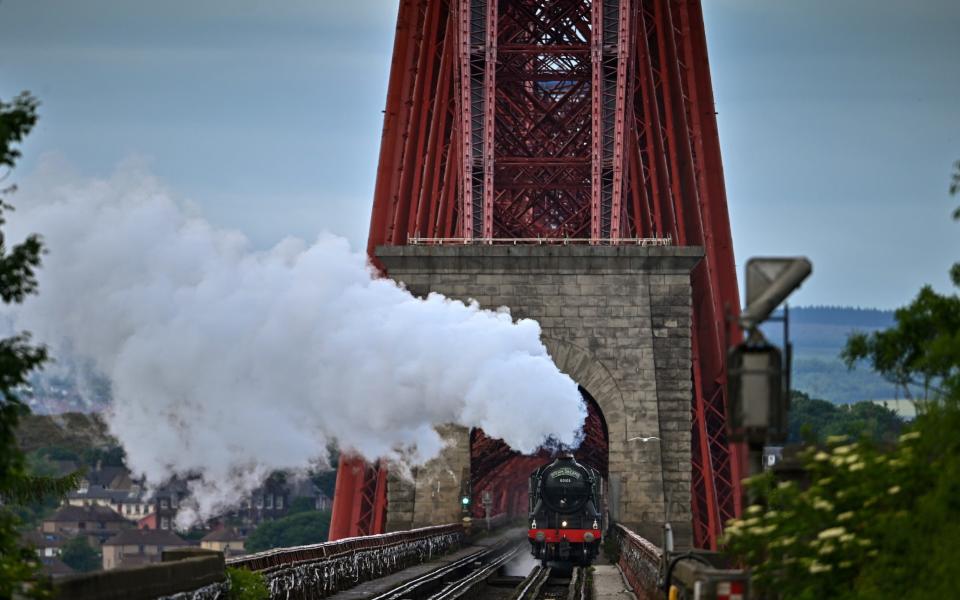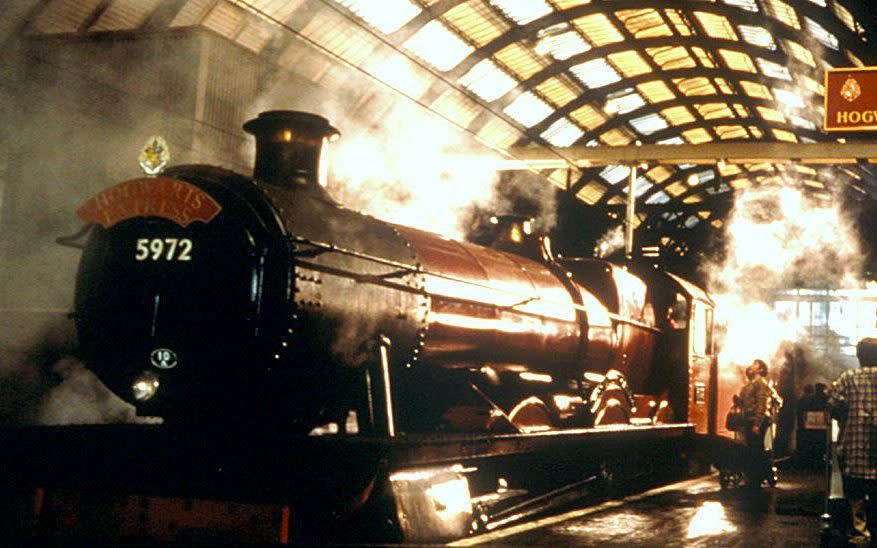The Harry Potter steam train could soon be no more

- Oops!Something went wrong.Please try again later.
You are probably familiar with the Jacobite Steam Train, even if you didn’t know it. The train features in the Harry Potter films as the Hogwarts Express, chugging along the curving Glenfinnan Viaduct in the Scottish Highlands.
In recent decades it has become one of Scotland’s most popular tourist attractions, and this week topped a Virgin Media O2 poll as the best film location in the UK (of 2,000 adults polled, it came out top). But its future is now under threat due to concerns surrounding its door-locking mechanisms.
Watch archive film of a slam-door commuter train rolling into London Waterloo station and long before the train comes to a stop, half its passengers will be striding along the platform, apparently desperate not to waste a second getting to work. They could take the risk of jumping off a moving train because carriage doors were then opened by passengers themselves.
At issue was the once ubiquitous Mark 1 carriage, which was introduced in 1951. Since then, however, various reports on accidents involving them concluded that the design is not inherently unsafe.
In the 1990s British Rail began introducing a system of centrally controlled door locking to prevent potentially risky behaviour. Post-privatisation, the government ordered a Health and Safety Executive review into the continued use of such vehicles in front-line service and put pressure on their replacement by the rolling stock leasing companies.

This resulted in regulations introduced in 1999 to remove the problem completely, by ordering their replacement by 2003, unless certain modifications were made to extend their permitted use. The regulation applied to railways where speeds exceed 40km/h, thereby excluding heritage railways, but specifically affected the small number of charter and tour operators who favoured the use of Mark 1 stock and who were never the main target of the regulations.
Among the conditions for their continued use for rail tours was for stewards to be responsible for secondary door locks, fitted to the four doors of each coach. The Office of Rail and Road (ORR) first issued exemptions in 2003 for a 10-year period, provided evidence of a coach’s structural soundness was approved and satisfactory steward provision was made. These exemptions were renewed in 2013 for a further 10-year period. Implicit in these renewals was that, unless circumstances changed significantly, similar exemptions were to be expected in the future.
In 2021 ORR updated the guidance, requiring any stock operating on the main line after March 31 2023 to have central door locks. Further exemptions would be issued only in exceptional circumstances. Central locks have been fitted by Saphos Trains to its single 12-coach air-braked set, and Vintage Trains has agreed with ORR a timetable to fit them to their similar number of vehicles. However, West Coast Railways (WCR) has taken ORR to court, under a judicial review about the process that underpins the diktat. Until the judgement is handed down (probably not before February 2024), a three-month exemption has been granted.

Britain’s largest charter operator, West Coast Railways (WCR), runs around 600 charter trains a year with 120 carriages and estimates that fitting central locking to its fleet would cost about £7 million, making the business unviable. The high cost of fitting central door locks is partly because the carriages of the steam age are vacuum braked and central door locks need a supply of air – modern trains are air braked.
As its commercial director, James Shuttleworth said, “[though] we are pleased that the ORR have issued us a further exemption…this remains a precarious position to be in...”.
Sharing his anxiety are the many small businesses that have come to rely on West Coast’s flagship Jacobite Steam Train for attracting people to Fort William and Mallaig, in the West Highlands of Scotland. During the 2023 season, the train carried 110,000 passengers, helped in no small measure by the publicity given to the scenic line by its use in Harry Potter films. It has been estimated that the total contribution of The Jacobite to the British tourist industry, as a whole, is in excess of £25 million.
As Bill Reeve, director of Rail at Transport Scotland, said, “We are strongly supportive of the operation of charter trains in Scotland. Trains like the Jacobite make a strong contribution to the economies of the routes they serve. People visit Scotland specifically to ride on trains like this and that brings good business to hotels and catering establishments.
“Equally, safe operation is an absolute requirement for any operator on Scotland’s Railway, ensuring which is very properly the responsibility of the rail industry’s independent safety regulator, ORR.”

WCR argues that no risk assessment has been done by ORR to establish a proportionate and realistic position. There have been no accidents or casualties under the exemptions granted since 2003, and in 2014 the ORR itself proposed to repeal the regulations because the risk attached to hinged doors on commuter trains in the south east had been removed by the arrival of new trains. No parliamentary time was found for its repeal, but implicit in the proposal was an acceptance that the objectives of the 1999 regulations had been met and did not need to apply to the few charter operations.
The majestic sight of a steam locomotive at speed on the main line could be at risk if the judicial review goes against WCR’s case. For the country that holds the world speed record for steam locomotives, with Mallard’s 126mph down Stoke Bank between Grantham and Peterborough in 1938, it would be a sad day if future generations could only see steam locomotives pottering along at 25mph.

